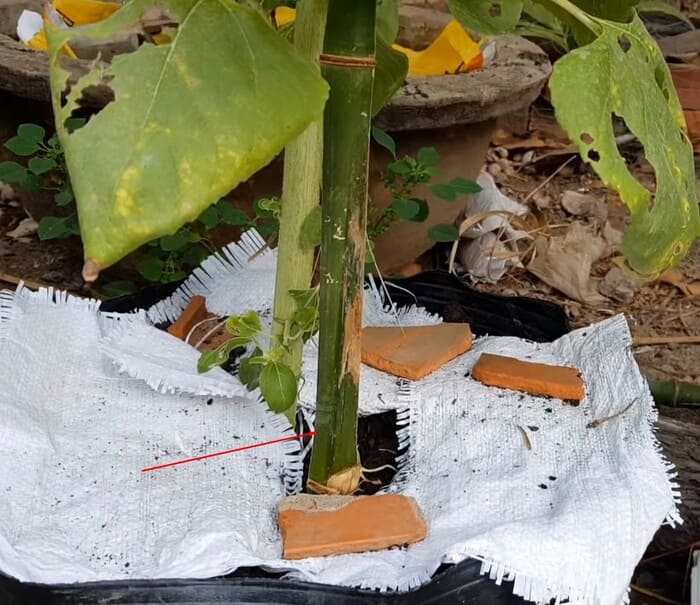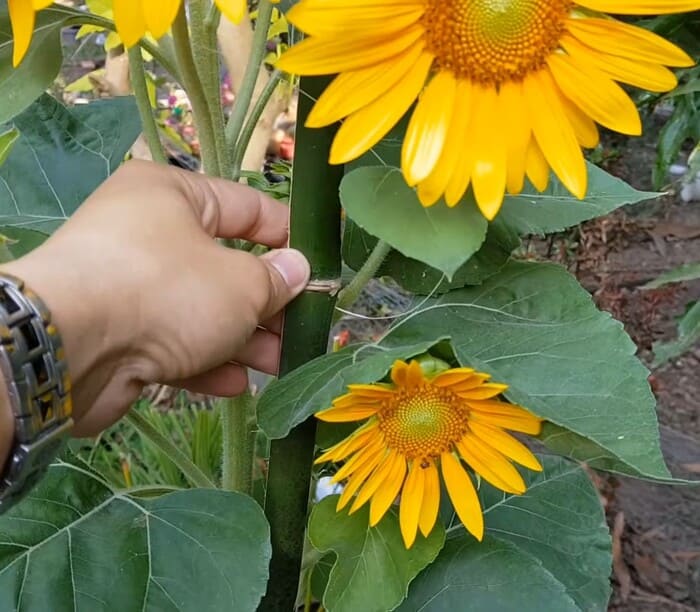Hi everyone! Here are the sunflower seeds I bought – golden sunflower seeds.

You can easily buy these sunflower seeds on e-commerce platforms, and they’ll be delivered right to your doorstep. On the packaging, it says the blooming time is from 60 to 65 days. After sowing, I’ll keep track of the actual blooming time to see if it differs much from what’s printed on the packet. I’ll also share how to make the sunflowers last longer.
I mix the soil for sowing with a ratio of 1 part soil to 1 part organic fertilizer.
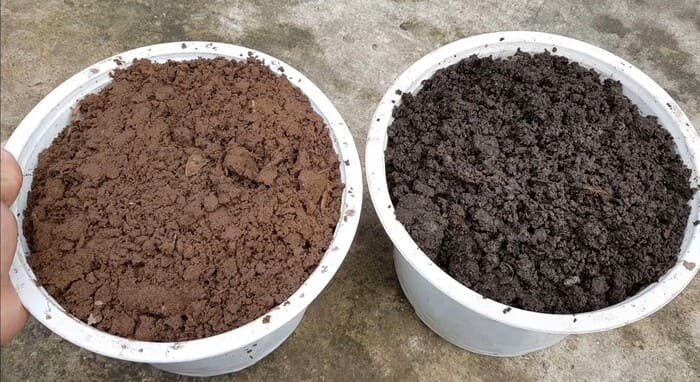
You can use cow manure, goat manure, chicken manure—any of these are fine as long as they are well-composted or pre-treated packaged fertilizers. After mixing the soil thoroughly, I place it into small pots and water it.
Then I sow the sunflower seeds—just a bit extra to be safe. I cover the seeds with a thin layer of soil and water evenly. Place the pots in a sunny spot and keep the soil moist daily to prevent it from drying out.
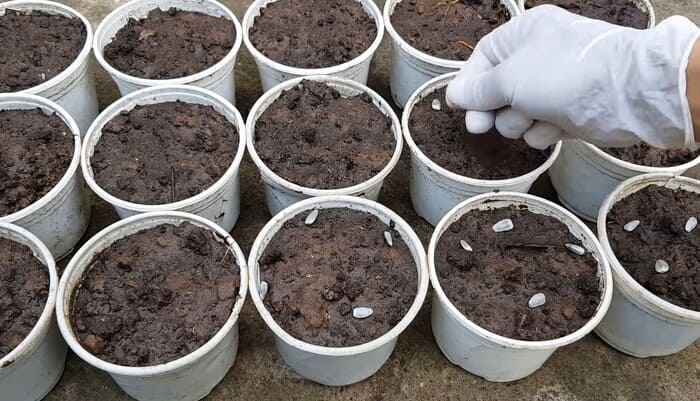
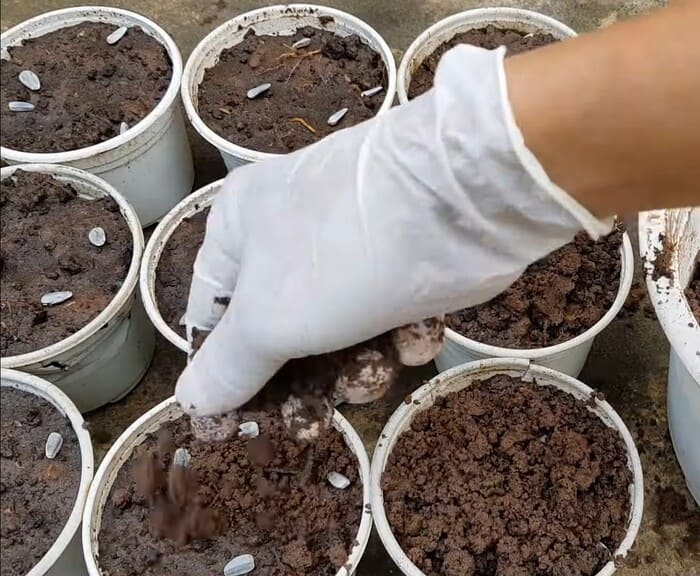
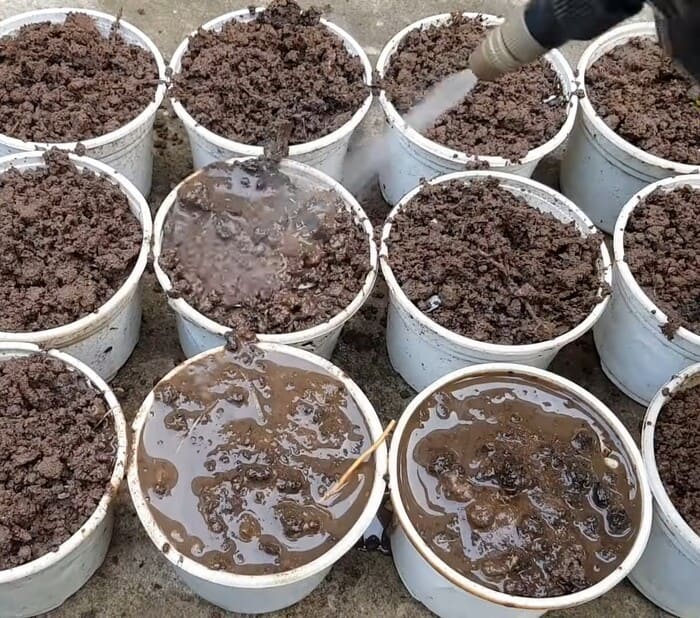
After 10 days, the sunflower seedlings look like this.

At this stage, I transplant them into larger pots. The soil mix for the bigger pots uses a ratio of 2 parts soil to 1 part organic fertilizer. You can also add 1 part rice husk ash or rice husks to make the soil more porous.

After mixing, I fill the large pots with the soil mix, water them, and then transplant the seedlings. You can either plant one seedling per large pot or thin out the weaker ones, keeping only the healthiest plant in each pot.
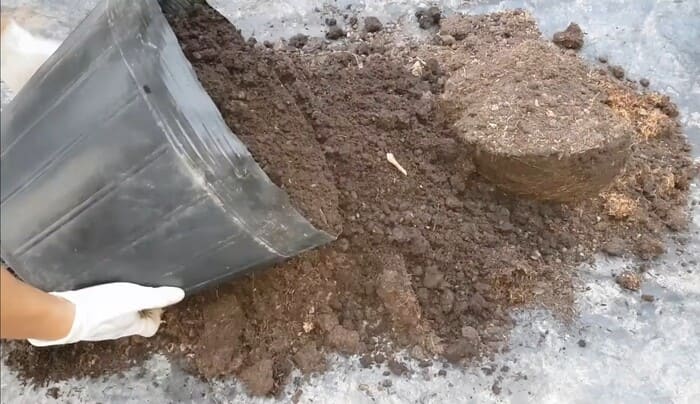
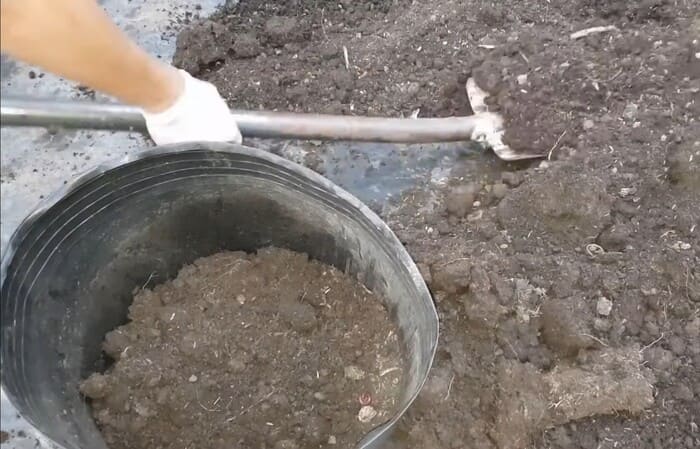
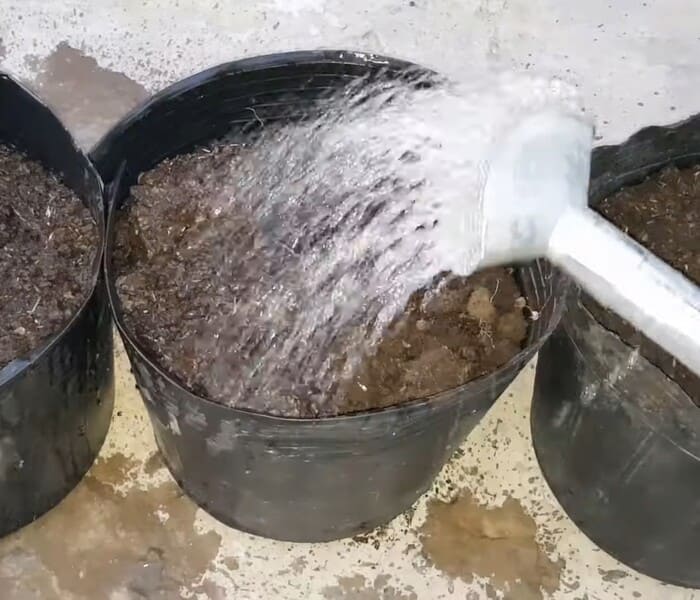
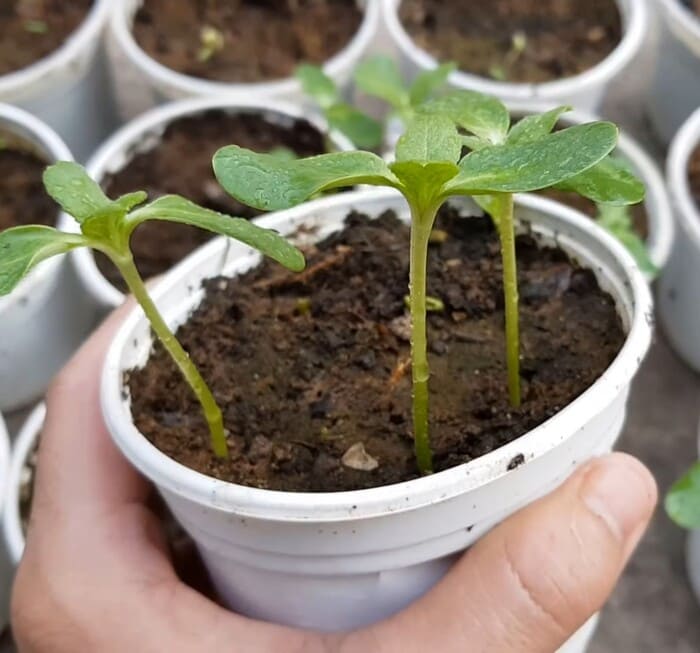
After one month, the sunflowers grow to about 23 cm tall.

When I transplant them into larger pots, I sometimes place small pieces of plastic bags or mulch around the base to retain moisture—this step is optional. I water the plants daily and place them in full sunlight.

At one month old, when the plants look like this, I start fertilizing them regularly with organic fertilizer every 10 to 14 days. I pull back the mulch, apply the fertilizer, water, and then replace the mulch.
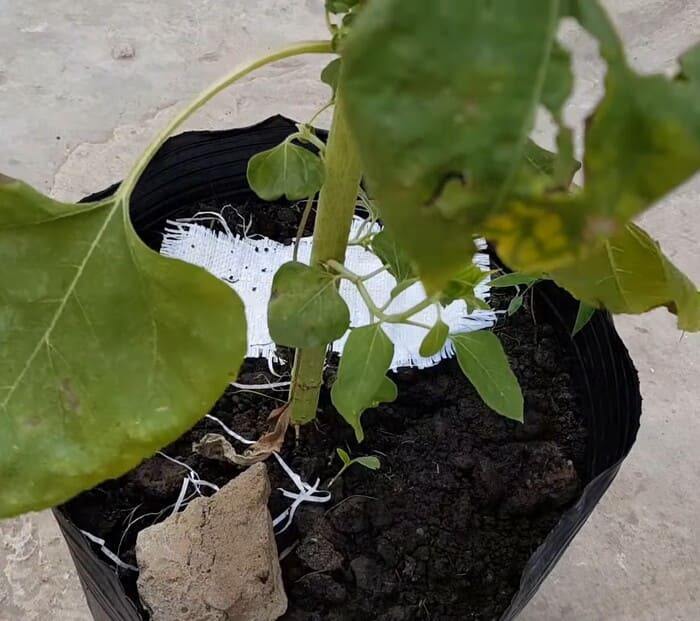
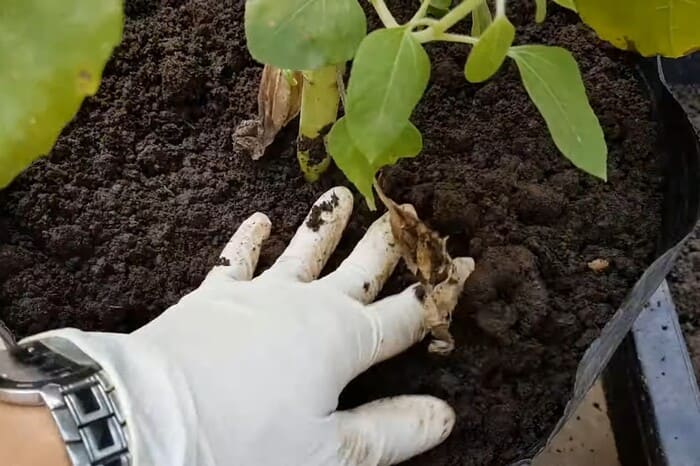
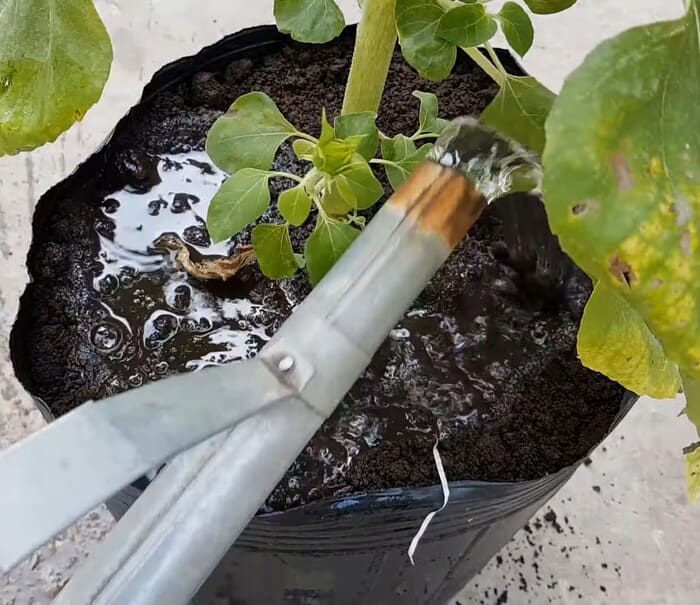
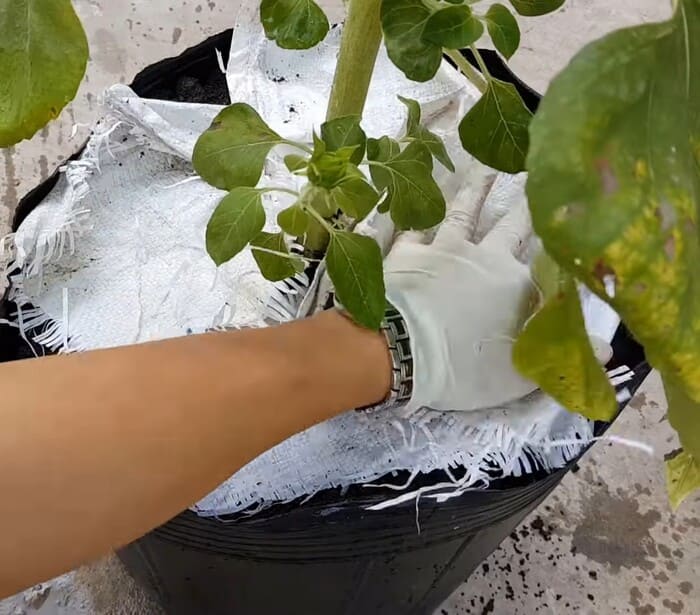
After 50 days, the sunflowers begin to form small buds like this. During this time, the plants need a lot of water, so make sure they never dry out.
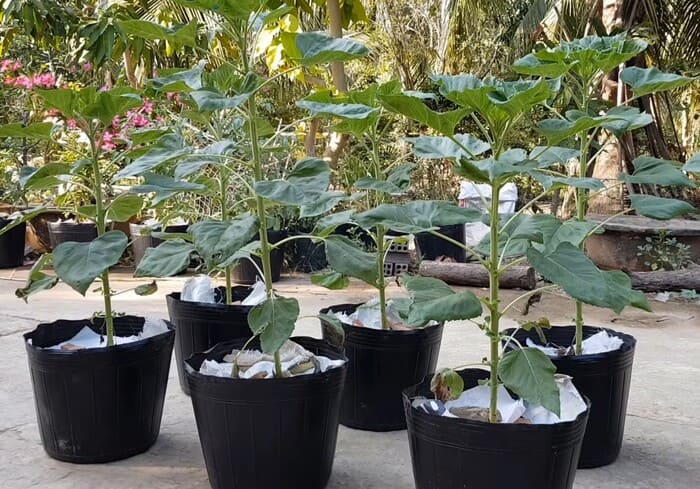
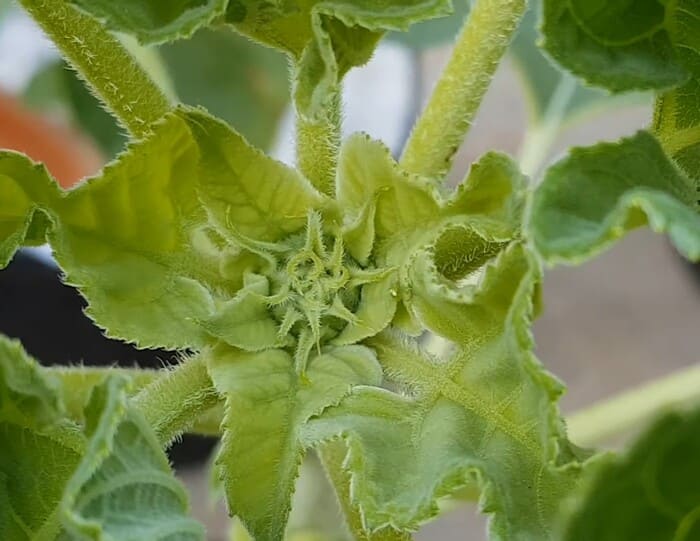
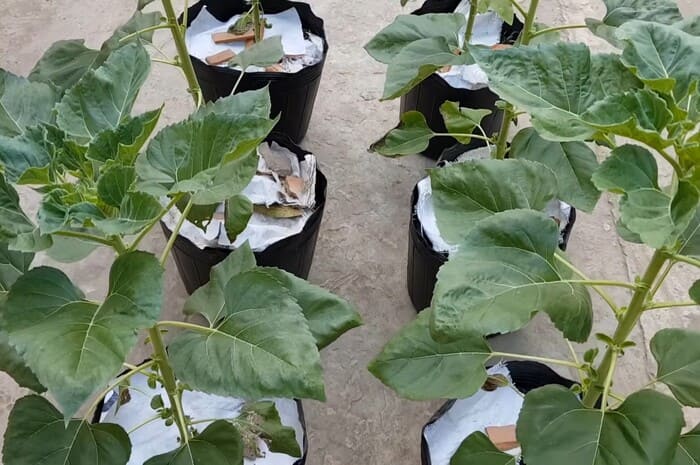
At 80 days after sowing, the sunflowers reach full bloom. The packaging says they should bloom in 60–65 days, but for me, they bloomed around day 70—that is, the largest flower on the top bloomed fully, which is a 5-day delay compared to the packet.
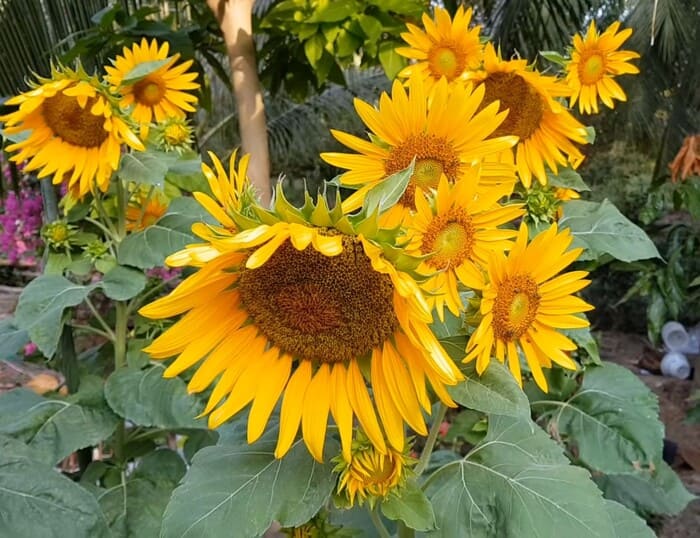
There are two reasons for this slight delay:
- The first is the weather—if there are many cold spells while growing, the sunflower's growth may slow down.
- The second reason is that I mainly use organic fertilizer and rarely use chemical fertilizers to speed up growth.
After 70 days, the top flower fully blooms. By day 80, the surrounding flowers also start to bloom. I noticed that when the surrounding flowers start blooming, the sunflower looks very lush.
So, if I want the sunflowers to bloom on a specific holiday, I use the blooming time on the packaging and add about 1 to 2 weeks as a buffer.
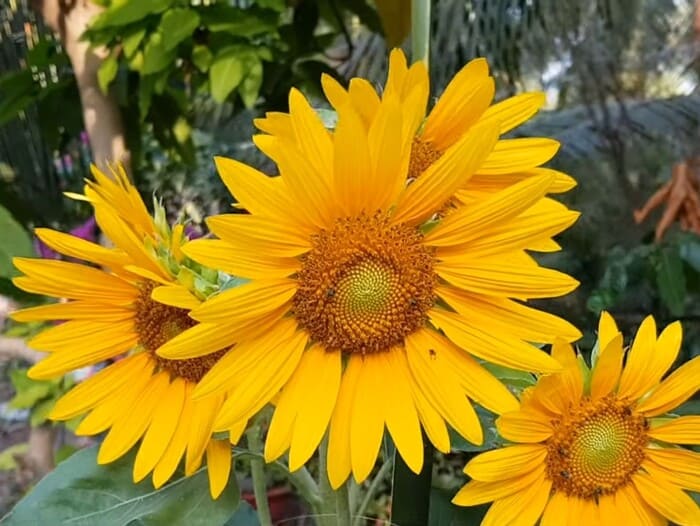
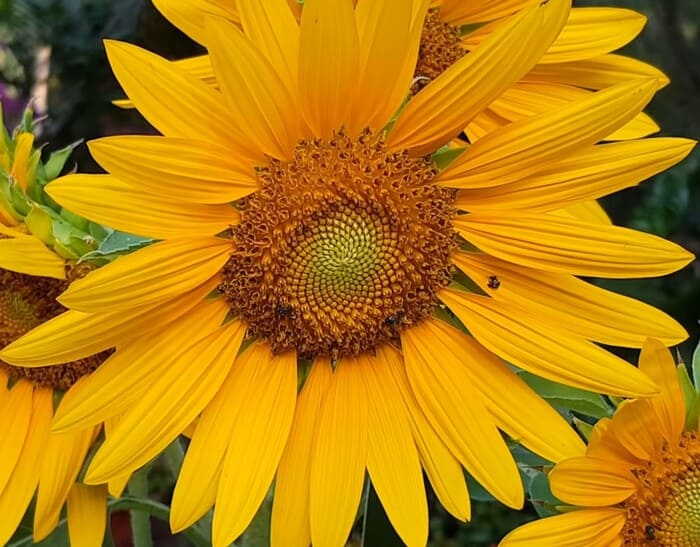
To keep the flowers fresh for longer, once the blooms are fully open and beautiful, I fertilize them with flower-enhancing fertilizer, which helps extend the blooming period a bit more.
This is the type of fertilizer I use to keep the sunflowers fresh longer. You can also easily purchase this kind of fertilizer on e-commerce websites if it's not available locally.
The flower fertilizer helps prolong the freshness of the petals.
Even when the petals start to droop, if fertilized properly, they will stay fresh longer than without it.
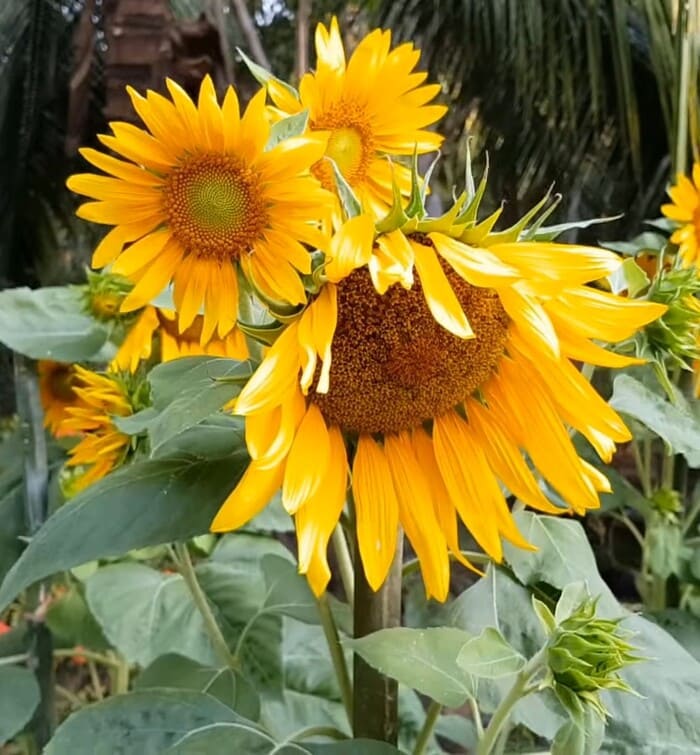
Since sunflowers are quite tall and the top flower is large, they tend to lean forward. I use bamboo stakes to support and keep the plant upright so the sunflowers don’t tilt or fall forward.
